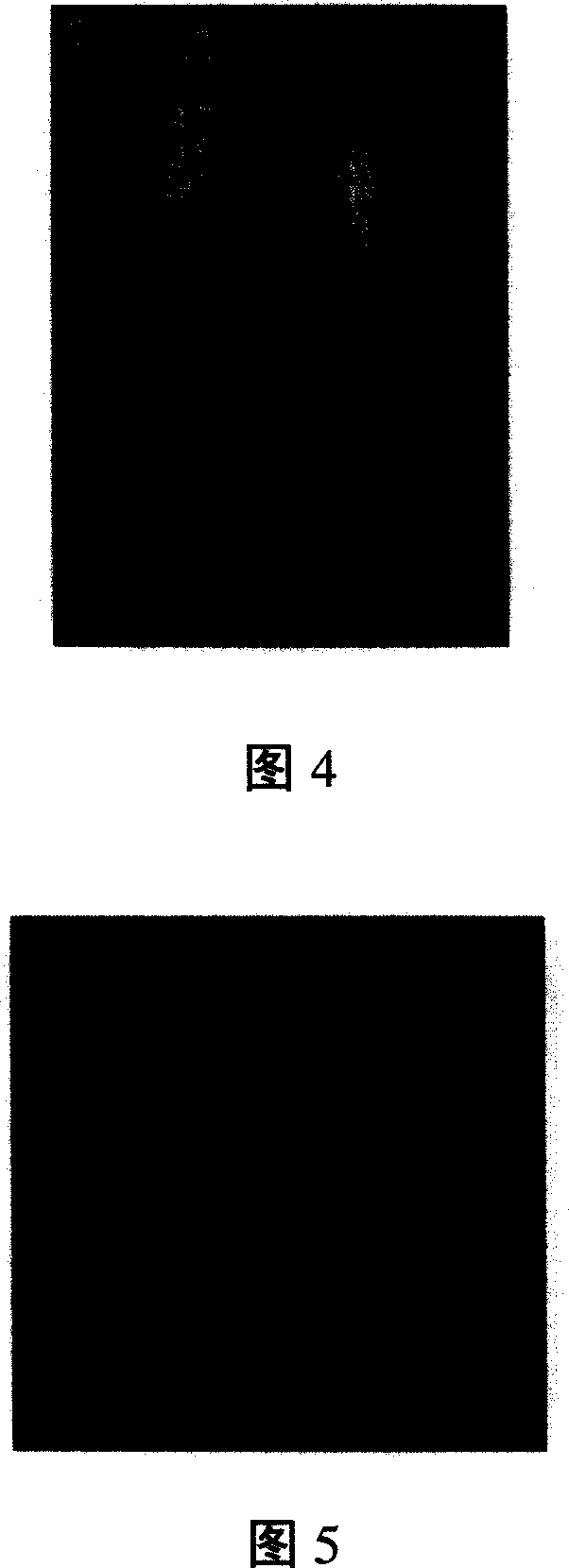Goffer pseudomonas P94 and application thereof
A technology of pseudomonas and folds, applied in the field of new microbial strains, to achieve good control effects, good plant growth promotion effects, and increase yield effects
- Summary
- Abstract
- Description
- Claims
- Application Information
AI Technical Summary
Problems solved by technology
Method used
Image
Examples
Embodiment 1
[0024] Identification of Example 1 P94
[0025] Pseudomonas corrugata (Pseudomonas corrugata) P94 CGMCC NO.1895 was identified as Pseudomonas corrugata genotype II based on the results of morphological characteristics, physiological and biochemical characteristics, 16SrDNA sequence and specific primer analysis. The specific identification results are as follows:
[0026] 1. Morphological characteristics of bacteria
[0027] Gram staining is negative, yellow-green soluble non-fluorescent pigments are produced on PDA medium, and the colonies are blue-green; on KB medium, less pigment is produced, and the colonies are light yellow-green. Electron microscope observation shows that the bacteria are oblong, 0.7×1.8 μm in size, and have no less than two polar flagella (see Figure 1).
[0028] 2. Physiological and biochemical characteristics
[0029] Table 1 shows the physiological and biochemical characteristics of Pseudomonas rugosa P94.
[0030] Table 1. Physiological and bioch...
Embodiment 2
[0038] Embodiment 2 antibacterial spectrum analysis
[0039] Plate inhibition detection method for pathogenic fungi: use a hollower to inoculate target pathogenic fungi with a diameter of 5mm on the center of the PDA plate, P94 and target bacteria at an angle of 180° and inoculate at 2.5cm from both sides of the target pathogenic fungus, and incubate at 25°C for 4 to The diameter of pathogenic fungal colony was measured after 6 days. The plate inoculated with target fungi but not P94 was used as a control. The growth inhibition rate was calculated according to the following formula:
[0040] Growth inhibition rate=(C-T) / C×100%
[0041] C: Control fungal growth diameter
[0042] T: fungal growth diameter after inoculation with P94
[0043] Inhibition detection method on pathogenic bacteria plates: double-layer culture method was used to detect the inhibition of Pseudomonas rugosa P94 on pathogenic bacteria. After activating P94 with KB medium, make 10 with physiological sa...
Embodiment 3
[0051] Example 3 Detection of biocontrol-related traits
[0052] Protease detection: use skim milk plate (tryptone 5g, yeast extract 2.5g, glucose 1g, 7% skim milk 250ml, agar 15g, make up to 1000ml with water) to detect protease. Inoculate P94 into the center of the plate and incubate at 28°C for 72 hours. A transparent circle around the colony indicates protease positive (see Figure 3).
[0053] HCN detection: HCN detection test paper preparation, 10mg copper (II) ethylacetoacetate and 10mg 4,4'-methylenebis-(N,N-dimethylaniline) dissolved in 4ml of chloroform, cut Whatman filter paper strips, soaked in the prepared solution In the process, the HCN detection test paper was prepared after the chloroform volatilized completely. Inoculate P94 in a centrifuge tube containing 1ml of KB medium, suspend the HCN detection test paper in the centrifuge tube, and incubate at 28°C for 36 hours. The HCN detection test paper turns blue, indicating that P94 produces HCN (see Figure 4).
...
PUM
 Login to View More
Login to View More Abstract
Description
Claims
Application Information
 Login to View More
Login to View More - R&D
- Intellectual Property
- Life Sciences
- Materials
- Tech Scout
- Unparalleled Data Quality
- Higher Quality Content
- 60% Fewer Hallucinations
Browse by: Latest US Patents, China's latest patents, Technical Efficacy Thesaurus, Application Domain, Technology Topic, Popular Technical Reports.
© 2025 PatSnap. All rights reserved.Legal|Privacy policy|Modern Slavery Act Transparency Statement|Sitemap|About US| Contact US: help@patsnap.com


